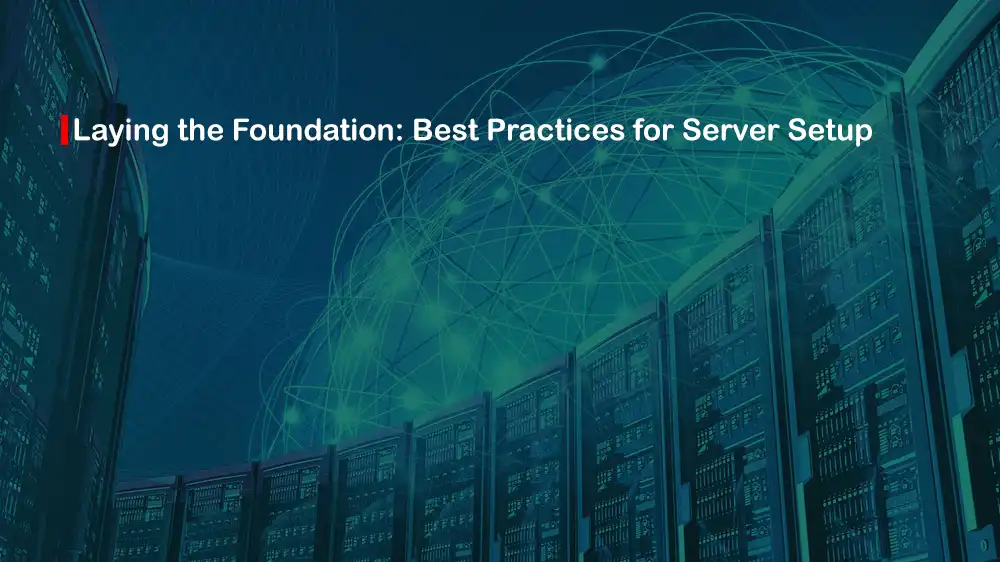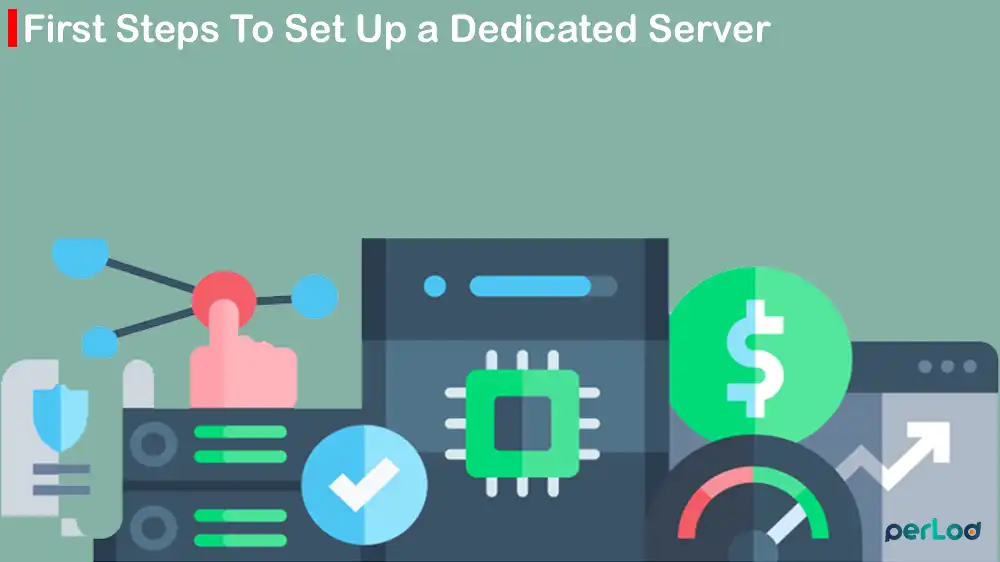
Initial Dedicated Server Setup: Best Practices Guide
Among businesses, a dedicated server is the most reliable, cost-effective, and strategic choice. In the previous article, you can check why dedicated servers are making a comeback in 2025. Setting up a dedicated server for the first time may be a hard process. But by understanding your needs and preparing the requirements, it will not be as complex as it seems. In this guide, we will help you discover initial dedicated server setup with best practices to ensure a secure and high-performance environment for your business.
Before we dive into the best practices for setting up a dedicated server, it’s important to choose the right hosting solution. At PerLod Hosting, we provide powerful and secure dedicated servers designed for high performance, reliability, and full control. If you’re planning to host business applications, large websites, or databases, our dedicated servers give you the stability and flexibility you need.
Table of Contents
Dedicated Server Pre-Setup Considerations
Before setting up a dedicated server, you must consider some factors first. In this step, we want to discuss them.
1. Choose Managed or Unmanaged Hosting? The first question is what dedicated server hosting you must choose, managed or unmanaged.
Unmanaged hosting provides full root access and control, which means you are responsible for all software installations, updates, security, and maintenance. This is best for businesses that have an expert IT team.
Managed hosting is suitable for businesses that don’t have an expert IT team and want the provider to handle the setup, security, maintenance, and support.
Depending on your business and team, you should choose which one is better for you.
2. Hardware Selection: The next question is to choose the best Hardware settings, including CPU, RAM, Storage, and Bandwidth.
- CPU: You must choose a processor based on your workload. For example, Intel Xeon processors are suitable for high-traffic sites.
- RAM: For web hosting, you can start with 16 GB RAM. But consider allocating more RAM (34 or 64GB) for apps and database resources.
- Storage: For faster read and write speed and better performance, use SSDs. If you need large storage, you can consider using HDDs, which are cost-effective. Also, run RAID configurations for redundancy,
- Bandwidth: To handle traffic, be sure your plans have enough bandwidth, like 1Gbps or 10 Gbps.
3. Select desired Operating System: Finally, you must select which OS you want to use, Linux distributions or Windows Server.
Linux distros like Ubuntu or AlmaLinux are best for most server environments. On the other hand, Windows Server is best for Microsoft-specific applications like SQL Server or Active Directory.
Once you are done with pre-setup considerations, you can start your initial Dedicated Server setup.
Best Practices For Initial Dedicated Server Setup
At this point, you can start your initial server setup. Follow the steps below to get the best practices.

1. Secure Dedicated Server Access
Securing your server is the most important task you must do. It is highly recommended to disable password-based logins and use SSH keys for secure authentication. This prevents brute-force attacks. To generate an SSH key pair, you can use the command below:
ssh-keygen -t rsa -b 4096Then, copy the public key to your server, which allows SSH key-based logins:
ssh-copy-id username@serverNext, try to log in without a password:
ssh username@server_ipTo reduce automated attacks, it is recommended to change the default SSH port. Change the SSH port from 22 to another port. Also, you can disable root logins and use accounts with sudo privileges. For this purpose, you can edit the SSH config file:
nano /etc/ssh/sshd_configIn the file, look for the following lines and uncomment them, and change the value:
# Disable root login over SSH
PermitRootLogin no
# Only allow the new user to log in (optional but recommended)
AllowUsers username
# Disable password authentication - ONLY do this after confirming you can log in with your key!
PasswordAuthentication no
# Change the default SSH port (optional). Uncomment the 'Port' line and change 22 to another port.
Port 2222Note: If you change the Port and have a firewall enabled, you must allow the new port before restarting SSH, or you will be locked out.
To apply the changes, restart the SSH service:
sudo systemctl restart sshdFor firewall configuration, use tools like iptables (Linux) or Windows Firewall to restrict unnecessary traffic. Only allow ports essential for your services.
2. Dedicated Server Network Configuration
Another essential step is to configure your dedicated server’s network. Static IP Address, DNS Settings, and DDoS Protection are the main configurations you must consider.
1. Assign a static IP address: For consistent connectivity, reliable remote access, hosting services, and security policies, you must be sure to assign a static IP address.
2. DNS Settings: You must be sure to configure reliable DNS servers like your hosting provider’s DNS, Google DNS, or Cloudflare for efficiency, speed, reliability, and security.
Popular Public DNS Servers:
- Cloudflare: 1.1.1.1 and 1.0.0.1 (Prioritizes privacy and speed)
- Google: 8.8.8.8 and 8.8.4.4 (Well-known and reliable)
- Quad9: 9.9.9.9 and 149.112.112.112 (Focuses on security by blocking malicious domains)
The best practice is to set the DNS settings as part of your static IP configuration.
3. DDoS Protection: To protect against attacks, consider adding DDoS mitigation services.
How to Mitigate DDoS Attacks?
Mitigation happens at different layers. If you have a large-scale DDoS attack on layers 3 and 4, you need upstream help. Here are the most effective ways you must consider:
1. Provider-Level Protection (Most Important): Consider using hosting providers (e.g., PerLod) with DDoS mitigation services.
2. Using a Cloud-Based Proxy (Highly Recommended): Services like Cloudflare act as a reverse proxy. You point your domain’s DNS to Cloudflare. All traffic first goes to Cloudflare’s global network, which acts as a “shield.” This hides your server’s real IP address, which is the most effective thing you can do to protect yourself. This is excellent for mitigating application-layer (Layer 7) attacks.
In short, for a dedicated server, choose a hosting provider with good built-in DDoS protection and place your public-facing web services behind Cloudflare or a similar service to hide your server’s IP and filter traffic.
3. Software Installation in Dedicated Server
For software installation, consider using powerful web servers like Apache or Nginx. Apache web server offers extensive module support, and Nginx web server is better for handling high concurrent connections.
For database needs, you need to use powerful database management systems like MySQL/MariaDB or PostgreSQL and optimize them for better performance.
Also, you can use control panels like cPanel or Plesk for easier server management from a graphical interface.
4. Security Considerations for Dedicated Server
Security is the most important factor. Always remember to keep your OS and software updated and enable updates for essential security patches.
You can use tools like Fail2ban to monitor and block suspicious activity. Fail2ban scans log files for multiple failed login attempts and bans the offending IP addresses.
Also, use SSL/TLS certificates to encrypt data transmitted between the server and clients.
5. Dedicated Server Data Backup Solutions
It is recommended to have a backup strategy for your server. If you face any issues, you can easily recover your data. Also, test your restore process. A backup is useless if you can’t restore it.
For dedicated server data backup, you can use a mix of built-in tools, specialized software, and cloud solutions. On Linux, tools like rsync or tar with scheduled tasks work well, while Windows offers Windows Server Backup and VSS.
There are also backup programs such as Acronis, Veeam, or R1Soft for more features. Many people use cloud storage like AWS S3, Google Cloud, or Backblaze to keep copies safe. If you use control panels like cPanel or Plesk, they have built-in backup options.
Note: Always try to follow the 3-2-1 rule: keep 3 copies of your data, in 2 different places, with 1 copy stored offsite.
6. Monitoring and Maintenance for Dedicated Server
Another initial dedicated server setup is monitoring and maintenance. Always try using tools like Nagios, Zabbix, or Prometheus to track server resources (CPU, RAM, disk usage). Also, you can run centralized logging with tools like Elasticsearch, Logstash, OpenSearch, and Kibana to analyze server activity and troubleshoot issues.
Tip: We have a detailed guide for setting up an OpenSearch cluster, which can be useful to read.
Remember to perform regular hardware checks, security audits, and software optimizations.
Optional Enhancements for Dedicated Servers
When you run a dedicated server, you can add more features to improve speed, reliability, and performance. Here are some optional enhancements you can consider:
Content Delivery Network (CDN): A CDN caches your content on servers worldwide. This will give users faster access and reduce the load on your main server.
Load Balancing: It is useful for high-traffic websites or apps. With a load-balancer, traffic spreads across multiple servers, and it prevents downtime if one server gets overloaded.
Caching Tools: Using caching tools like Varnish or Redis stores frequently used data. It makes response times much quicker and reduces pressure on your database.
These enhancements make your dedicated server stronger and more efficient.
FAQs
Why use RAID on a dedicated server?
Using RAID helps with redundancy and uptime, though it’s not a substitute for backups.
What DNS setup is best for a dedicated server?
Use your hosting provider’s DNS or configure your own with BIND. External DNS providers (like Cloudflare) add speed and protection.
Can I use virtualization on a dedicated server?
Yes, if you want to run multiple environments. Tools like KVM, Proxmox, or VMware ESXi allow you to create virtual machines.
What logs should I monitor regularly in a dedicated server?
Check /var/log/secure, /var/log/messages, web server logs, and database logs for signs of errors or attacks.
Final Words
Initial dedicated server setup needs careful planning and execution. By following the best practices we discussed above, including securing access, configuring networks, installing necessary software, and implementing monitoring and backup strategies, you can set up a powerful, secure, and high-performance server environment.
We hope you enjoy these best practices for initial dedicated server setup. Subscribe to our channels on X and Facebook to get the latest updates and news.
Further Reading:
